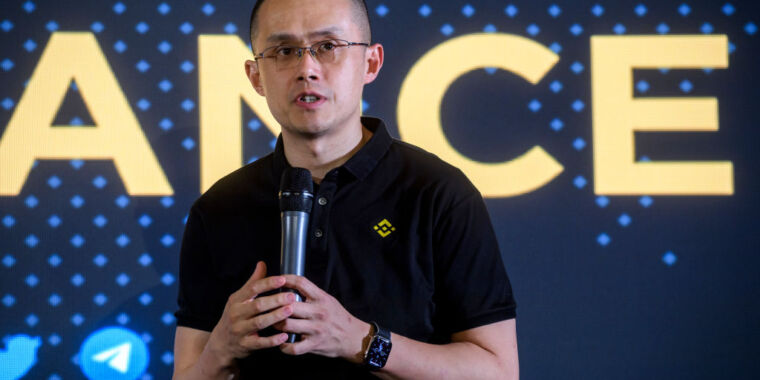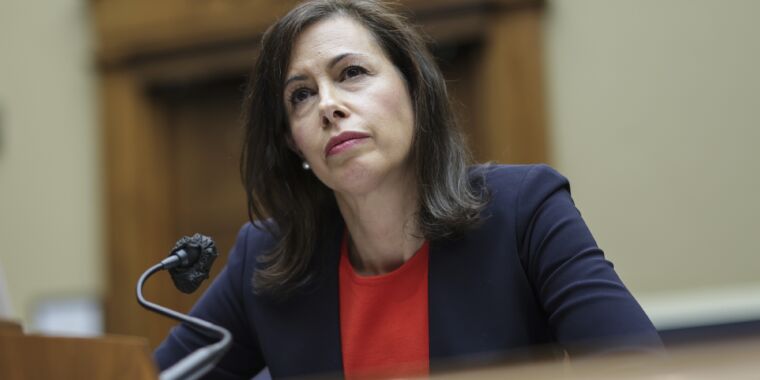Now that a federal court has approved a settlement with Binance, the world largest cryptocurrency exchange is hoping to move past a money-laundering scandal that forced its founder and CEO, Changpeng Zhao, to resign and overnight drained more than $1 billion in assets from its platform.
Under the settlement, Binance will “disgorge $1.35 billion of ill-gotten transaction fees and pay a $1.35 billion penalty” to the Commodity Futures Trading Commission (CFTC), the federal agency announced in a press release.
Additionally, Zhao will personally pay a $150 million civil monetary penalty. According to a plea agreement with the US Department of Justice—which ordered Binance to pay a “historic” penalty of $4.3 billion—Zhao’s previously ordered $50 million fine can be credited under certain terms against the amount that Zhao owes the CFTC.
The CFTC found that Zhao directed Binance to dodge US regulatory requirements and violate Binance’s own terms of use to hide unauthorized US trading on the exchange. Binance did this by soliciting US customers to trade on the platform without being subjected to Binance’s know-your-customer (KYC) procedures.
“Zhao and Binance were aware of US regulatory requirements, but chose to ignore them and knowingly concealed the presence of US customers on the platform,” the CFTC’s press release said. “The order also finds Zhao and other members of Binance’s senior management actively facilitated violations of US law, including instructing US customers to evade compliance controls.”
Among those “aiding and abetting Binance’s violations,” the CFTC said, was Binance’s former compliance-control officer, Samuel Lin. Under a separate order, Lin must pay a $1.5 million civil monetary penalty, the CFTC noted.
As part of the settlement, Binance will no longer allow customers to use sub-accounts to skirt KYC procedures and has agreed to remove all non-compliant accounts from the platform. Moving forward, Binance has agreed to “no longer allow existing sub-accounts, including those opened by prime brokers, to bypass the platform’s compliance controls,” the CFTC said.
Binance must also implement a new corporate governance structure, adding a board of directors with independent members and compliance and audit committees. This structure is intended to prevent Binance from approving suspicious transactions linked to terrorism, child sexual abuse, and ransomware attacks, as well as from violating anti-money laundering and sanctions laws.
In November, when Zhao resigned, Binance said that settling these lawsuits would help the crypto exchange “turn the page,” Reuters reported.
Zhao’s plea agreement prevents him from making any public statements contradicting his acceptance of responsibility for Binance’s schemes, and he has kept his word on that front. Shortly after resigning, Zhao wrote on the social media platform X (formerly Twitter) that he had made mistakes and must take responsibility “for our community, for Binance, and for myself.”
Within one day after Zhao resigned, though, some Binance users immediately did not appear confident in the platform, withdrawing more than $1 billion from the exchange, CNBC reported. A market analyst told CNBC that Binance’s token suffered most from the CEO stepping down.
However, the majority of Binance’s assets—more than $65 billion—remained on the platform, CNBC reported, indicating that Binance is likely big enough to survive this year’s legal storms.
Zhao said he was “proud to point out” that the plea deals “do not allege that Binance misappropriated any user funds” or “that Binance engaged in any market manipulation.” Naming his successor as CEO—Binance’s former global head of regional markets, Richard Teng—Zhao expressed confidence that Teng would “ensure Binance delivers on our next phase of security, transparency, compliance, and growth.”




